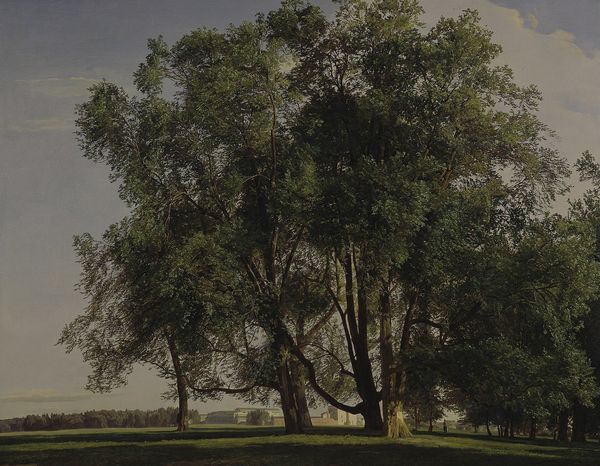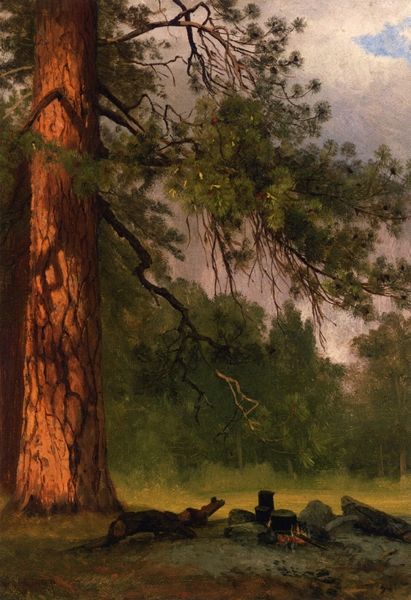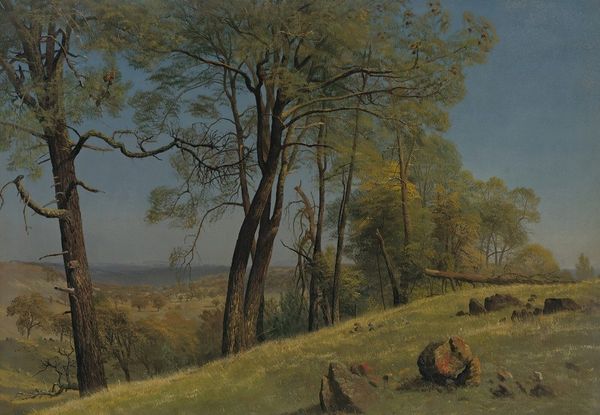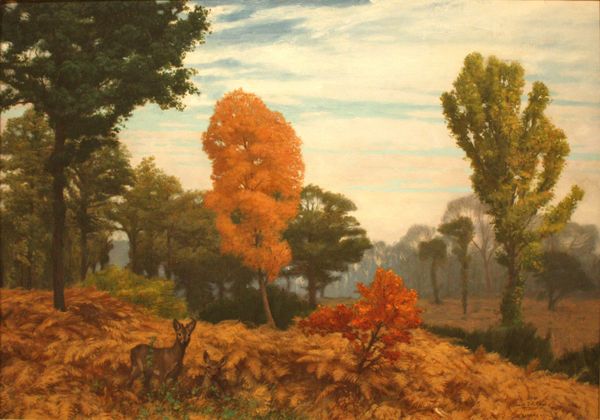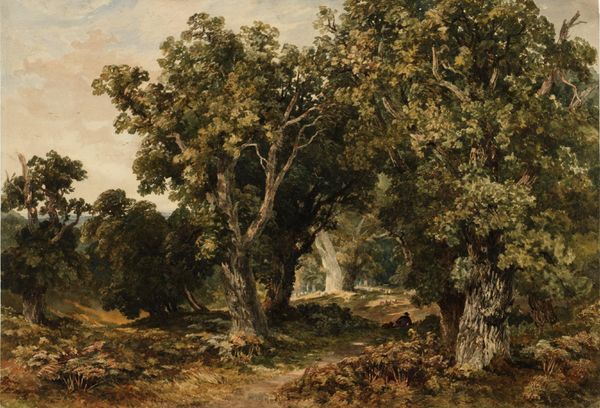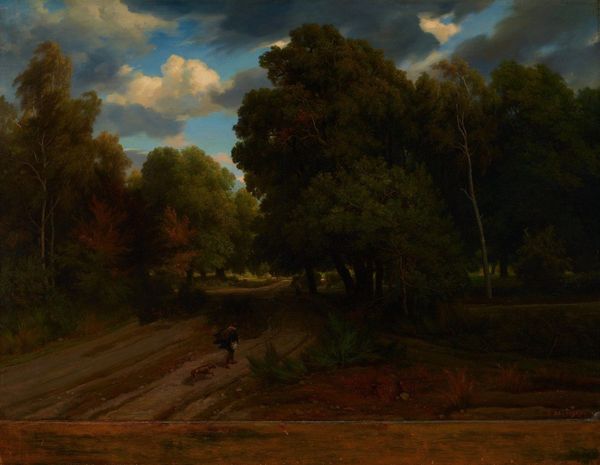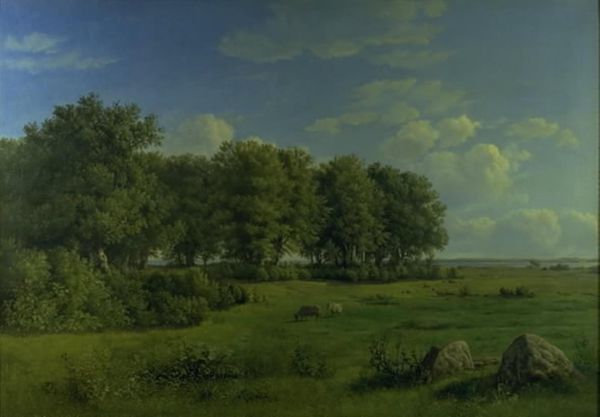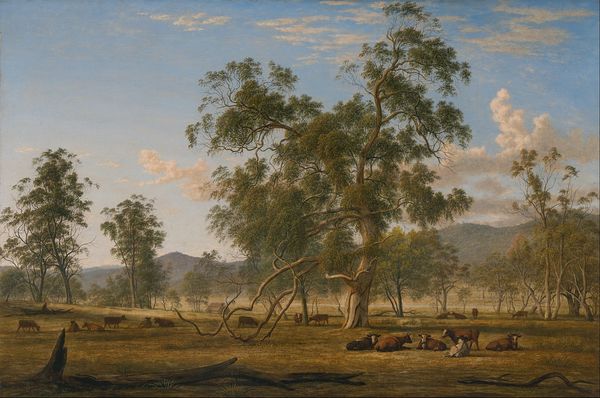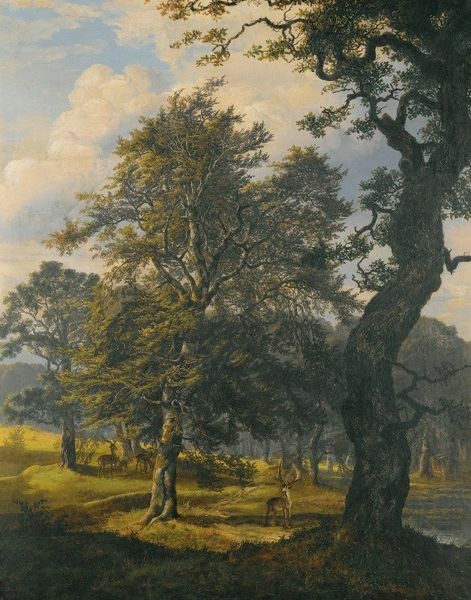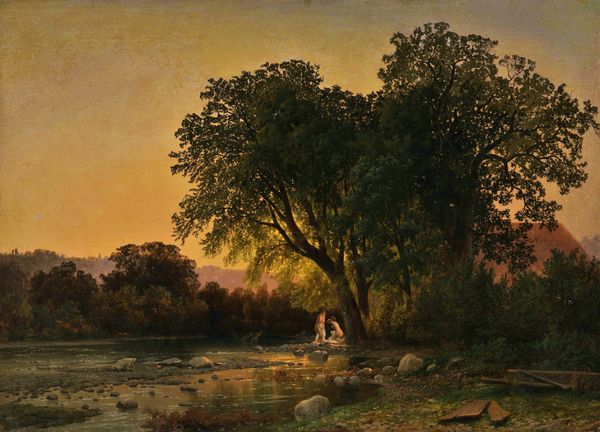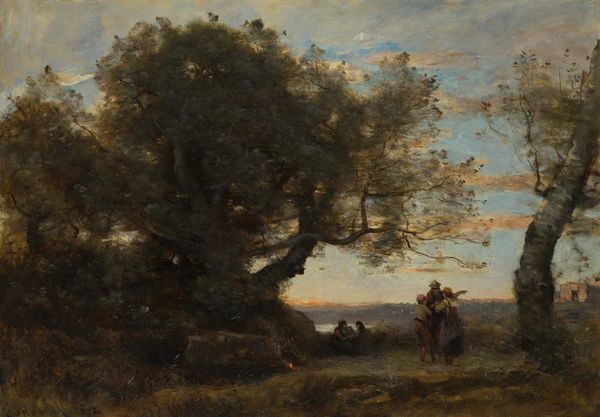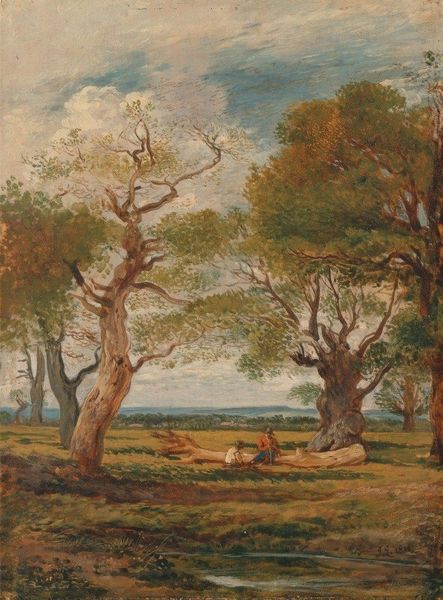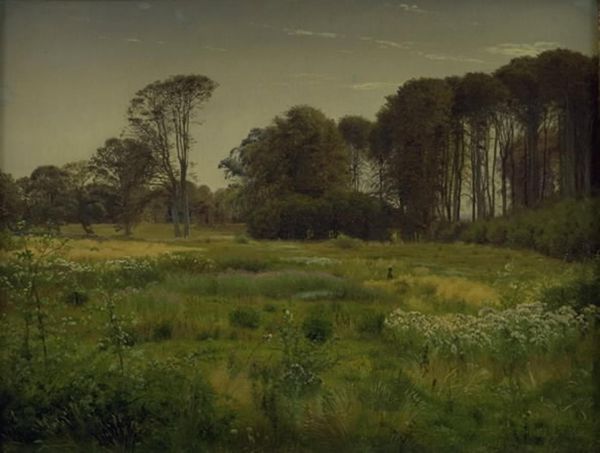
plein-air, oil-paint
#
plein-air
#
oil-paint
#
landscape
#
romanticism
#
genre-painting
#
realism
Copyright: Public Domain: Artvee
Curator: Looking at "Große Praterlandschaft" painted in 1849 by Ferdinand Georg Waldmüller using oil paint with a plein-air technique, one can't help but be struck by the grandeur of nature, presented with detailed realism within a romantic framing. Editor: The first thing that strikes me is how tranquil and idyllic the whole scene appears. The gentle colors and soft lighting seem to project such peacefulness. What sort of symbolism is operating here? Curator: Well, consider the time and place. 1848 was a year of revolutions across Europe. Waldmüller's depiction of the Prater, a large public park in Vienna, offers a contrasting vision, one of serenity and stability, that can be interpreted as an escape from social unrest. We also have to remember his works have always been involved with rural representation, sometimes even in terms of social advocacy through genre-painting. Editor: So, it’s not just a pretty picture, it’s potentially loaded with political subtext through what seems to be pastoral nostalgia? How would that be visually conveyed? Curator: Look at the trees; the painting presents them as enduring figures, silent witnesses to the events unfolding around them. And that family wandering beneath, so small in comparison, speaks to both our insignificance and our connection to nature's rhythms, as opposed to those of revolutionary fervor. Editor: Ah, so nature becomes an icon for something bigger—persistence and the comforting predictability of the seasons in times of change. It is as though the painting encourages turning to ancient wisdom in such dire moments, even with an implication for class belonging, considering the possibility of "going out in nature" as a leisured and bourgeois enjoyment. Curator: Exactly! It reminds us that grand political shifts do not occur without being framed into cultural and interpersonal struggles within specific class contexts. Waldmüller uses this slice of Viennese life to suggest deeper themes about resistance, hope, and social critique during times of tumult, embedding everyday reality within a profound philosophical context. Editor: It makes you wonder what silent stories are contained within those ancient trees. I am forever amazed how symbols of the landscape and life get attached to national imagination and historical trauma! Curator: It truly goes to show the power art has to convey complicated ideologies in seemingly straightforward visual representations. Editor: Indeed, and also shows how much scrutiny is necessary to tackle such political works. Thank you.
Comments
No comments
Be the first to comment and join the conversation on the ultimate creative platform.
